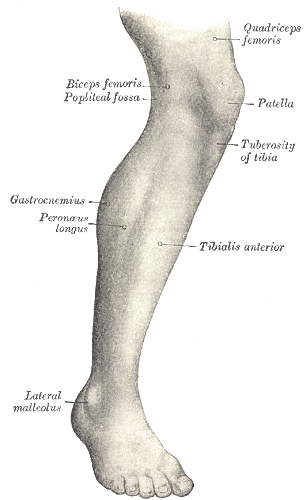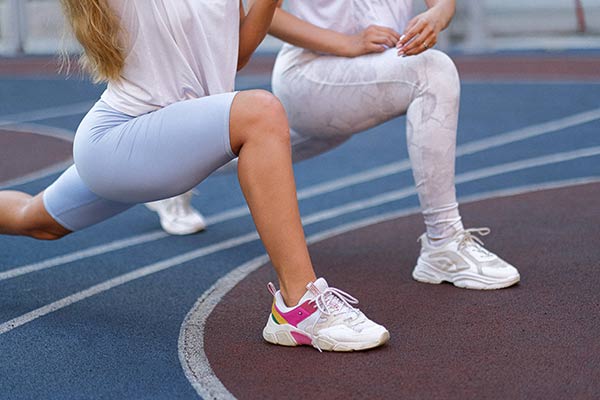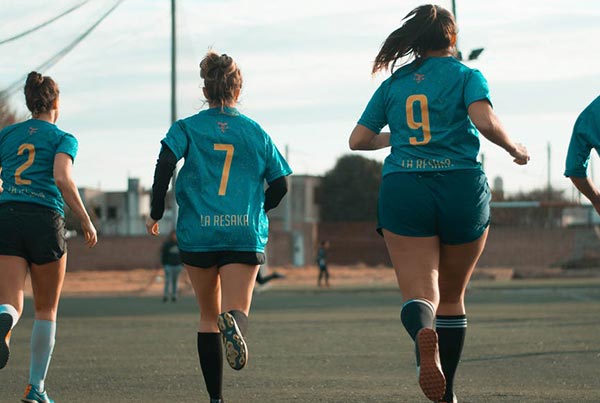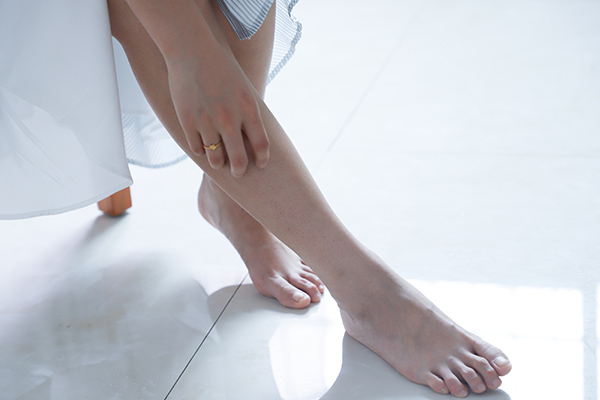How to Fix Shin Splints or Shin Pain
Shin splints and shin pain is a common complaint we see at Sport and Spinal Physiotherapy. It is particularly common in distance runners but can occur in any running sports, e.g. basketball, football, netball, or even from boot-camps. Shin pain is characterised by pain in and around the tibia (shin bone) in the lower leg. Shin pain is usually occurs as a result of a sudden increase in the frequency, duration and/or intensity of activity. Traditionally, the term shin splints has been used to describe the pain along the inside border of the tibia. However, this term doesn’t describe the injury adequately. There are multiple unique causes of shin pain which deserve a more specific diagnosis.
Shin splints & shin pain generally involves one or more anatomically specific causes.
- Bone Stress: A continuum of bone stress ranging from a stress reaction to a stress fracture.
- Vascular Insufficiency: A reduction in arterial blood flow or venous outflow due to venous insufficiency, thrombosis or vascular collapse.
- Inflammation: Usually developing around the insertion of muscles, most commonly the tibialis posterior and soleus muscles and fascia (covering of the muscles).
- Increased Intra-compartmental Pressure: The lower leg has 4 muscle compartments, each surrounded by a thick fascia (think skin of a sausage). As a result of overuse and inflammation these compartments become swollen and painful.
- Nerve Entrapment: Eg, the superficial peroneal nerve.
Signs and Symptoms of Shin Pain
The common characteristics of these conditions are:
Medial Tibial Stress Syndrome / Periostitis
- Diffuse pain along the front and/or inside of the tibia. It may be painful to touch and vary in intensity.
- Pain decreases as you warm up.
- Worse in the morning and after exercise
Stress Fracture
- Localised to an area along the front of the tibia, but usually near the middle, can be sharp pain.
- It is normally constant pain that increases with exercise and worse with impact.
- The pain develops suddenly and is sharp in nature.
Compartment Syndrome
- Pain along the front and/or inside of the tibia and in the muscles at the front of the lower leg
- Pain usually increases as activity begins (usually around 10-15 mins into exercise) and decreases when it stops. There should be no pain at rest.
- The muscles affected may feel weak or numb
- The sensation of pins and needles may also be a feature, and this may require urgent medical attention.
Popliteal Artery Entrapment
- Pain in calf with exercise, especially running and jumping.
- Pulses may be diminished on testing.
Muscle-tendon Strains / Tendinopathies
- Pain at specific muscle site with resisting muscle stretch.
- Stretching before exercise usually helps.
- Good response to ice and anti-inflammatories.

Causes of Shin Splints
Shin splints can be caused by a number of factors working in combination. These factors include:
- Overuse – exercising too hard or trying to exercise beyond your current level of fitness can strain muscles, tendons, bones and joints. Overuse is one of the most common causes of shin splints.
- Flat feet – the shin muscles are involved in maintaining the instep or arch of the foot. Flat feet can pull at the shin tendons and cause irritation.
- Incorrect technique – poor running form, such as ‘rolling’ the feet inwards (pronation), over striding, or landing heavily on your heels can strain the muscles and tendons of the lower leg.
- High impact activities – the impact of running on hard or uneven surfaces can cause injury to the muscles and bone of the lower leg.
- Running shoes – wearing the wrong type of shoe while running can contribute to shin splints. Likewise, if your shoes are worn out that will increase the forces going through the shin bone.
How to Treat & Manage Shin Splints
If you are suffering from shin pain you should make an appointment to see a physiotherapist to accurately diagnose the injury and provide you with the appropriate management and treatment strategies.
1. Early Injury Treatment
- The ‘Rest, Ice, Compression, Elevation’ rules still applies to shin pain even though it tends to be a more chronic injury. Read more here.
2. Avoid the HARM Factors
- Generally speaking during the first few days after any injury you shoulder avoid any ‘Heat, Alcohol, Running and Massage’ as these factors tend to increase blood supply to the injured area and cause more inflammation. For some causes of shin pain however, some form of heat, running and massage may be acceptable so it is always best to check with your physio.
3. Biomechanical, Gait and Running Analysis
- Most commonly shin pain is related to biomechanical or technique errors that cause an increase in stress on certain structures in the leg. These factors may be correctable and will reduce the stress on such tissues if properly addressed. You can read about our Running Assessments and take advantage of our Running Assessment Special this month
4. Strength Exercises, Foot Posture Correction Exercises
- Commonly shin splints is a result of an inability of the lower limb muscles to cope with a certain training load. Strengthening exercises can increase a muscles ability to cope with the stresses of sport or running.
5. Stretching Exercises
- Inflexibility, especially in the calf muscles and muscles of the shin, can cause pain and injury to the shin area. Stretching these muscles with correct technique will reduce the stress on them during activity.
6. Acupuncture and Dry Needling
- Dry needling can be used by your physiotherapist to help reduce the tension in the muscles around the lower leg and improve the flexibility, ultimately decreasing your pain. Read more about Dry Needling.
7. Medications
- Non-Steroidal Anti-inflammatory drugs (like Nurofen or Voltaren) can assist in speeding up recovery and may be recommended by your physio. Although you should always check with your Doctor if such medication is suitable for you, especially if you take other medications.
8. Soft Tissue Massage
- Massage helps improve the flexibility and decrease tension in tight and sore muscles. Usually physiotherapy will involve some form of soft tissue therapy to help reduce pain and improve recovery.
9. Joint Mobilisation Techniques
- Stiffness or a loss of range of motion in the ankle, heel or midfoot joints can increase the force going through the tibia whilst running and lead to a bone stress reaction which can become a stress fracture. Mobilisation techniques help restore normal movement to the joint and reduce such stresses.
10. Heat or Ice Packs
- Depending on the injury and the timeframe, heat or ice therapy can be used to reduce pain and assist in recovery.
11. Orthotics, Heel cups, Shoe Prescription
- To correct biomechanical problems, orthotics, or new shoes may be prescribed. If your injury is due to a lack of shock-absorption through the lower leg then gel heel cups may help reduce your pain by taking shock away from the shins whilst running or walking. Read more about orthotics.
12. Supportive Taping/Strapping
- Taping of the foot or calf can be effective in reducing the stress on the muscles and other tissues of the shin and may be used as a short term modality to help unload the painful structures and allow you to continuing exercising.
Prevention of Shin Pain
As with most injuries, prevention is easier and more effective than treatment. If you plan on starting running or an exercise program, or increasing the amount of training you are doing then there are certain things you can do that will reduce your risk of developing shin pain. Long-term management of Medial Tibial Stress Syndrome (MTSS) is centered on prevention.
Eliminating training errors is the cornerstone of preventing MTSS. Doing “too much too soon” at the start of a training program or sports season is the most common training error. The highest incidence of bone stress injuries occur in the first month. Practitioners also need to address surface and terrain issues. Grass, sand and road shoulders are not universally preferable to road running due to their irregular surfaces. A level uniform surface of moderate firmness is optimal for minimizing injury risk. Shoes should be sport-specific and you should change running shoes every 400-600 km. Studies have shown that a running shoe may lose greater than 60 percent of its shock-absorbing capacity after as little as 400 km.
Establishing normal strength, endurance and flexibility of calf and leg musculature is also important. A tight or overly strong calf can impart an increased bending force on the tibia. Weak or fatigued leg muscles may also result in up to a 25 percent increase in ground reactive forces. One should also address biomechanical abnormalities and structural mal-alignments. Two recent studies support an association between excessive pronation (rolling in of the heel) and MTSS in runners.
Finally, do not overlook hormonal and nutritional factors. The female athlete triad (amenorrhea, disordered eating and osteoporosis) has been linked to decreased bone marrow density and increased risk for bone stress injuries. It is important to note that the female athlete triad is not limited to elite athletes and that many athletes with these issues will not always meet the classic definitions or criteria. Nutritional assessments and diet counseling may be indicated even for athletes without disordered eating. Insufficient protein or calcium intake relative to the caloric demands of the athlete’s specific activity may be present.

In short…
- Choose the right shoes. Wear footwear that suits your sport. If you’re a runner, replace your shoes about every 400 to 600 kilometers.
- Consider arch supports. Arch supports can help prevent the pain of shin splints, especially if you have flat arches.
- Lessen the impact. Cross-train with a sport that places less impact on your shins, such as swimming, walking or cycling. Remember to start new activities slowly. Increase time and intensity gradually.
- Add flexibility and strength training to your workout. To strengthen your calf muscles try standing up, slowly rise up on your toes, and then slowly lower your heels back to the floor. Repeat until the calf feels fatigued. When this becomes easy, do the exercise holding progressively heavier weights or increase the amount of repetitions. You should be able to do 30 single leg calf raises if you want to decrease your risk of injury with running. Squats, lunges and other gluteal strengthening exercises are also very helpful for proper running technique.
If you are thinking of starting a running program or increasing the intensity or distance of your current program consider booking in for a 1 hour running assessment at Sport and Spinal Physiotherapy. We perform a biomechanical examination to determine any tight, weak or asymmetrical biomechanical issues, in combination with running technique assessments and correction with exercise prescription to ensure you get the most out of your body and reduce your risk of injury.
Don’t forget to take advantage of our special running assessment offers we have on for the month on March!
References
Conquering Medial Tibial Stress Syndrome
Lower Leg Pain: Causes and Treatments



